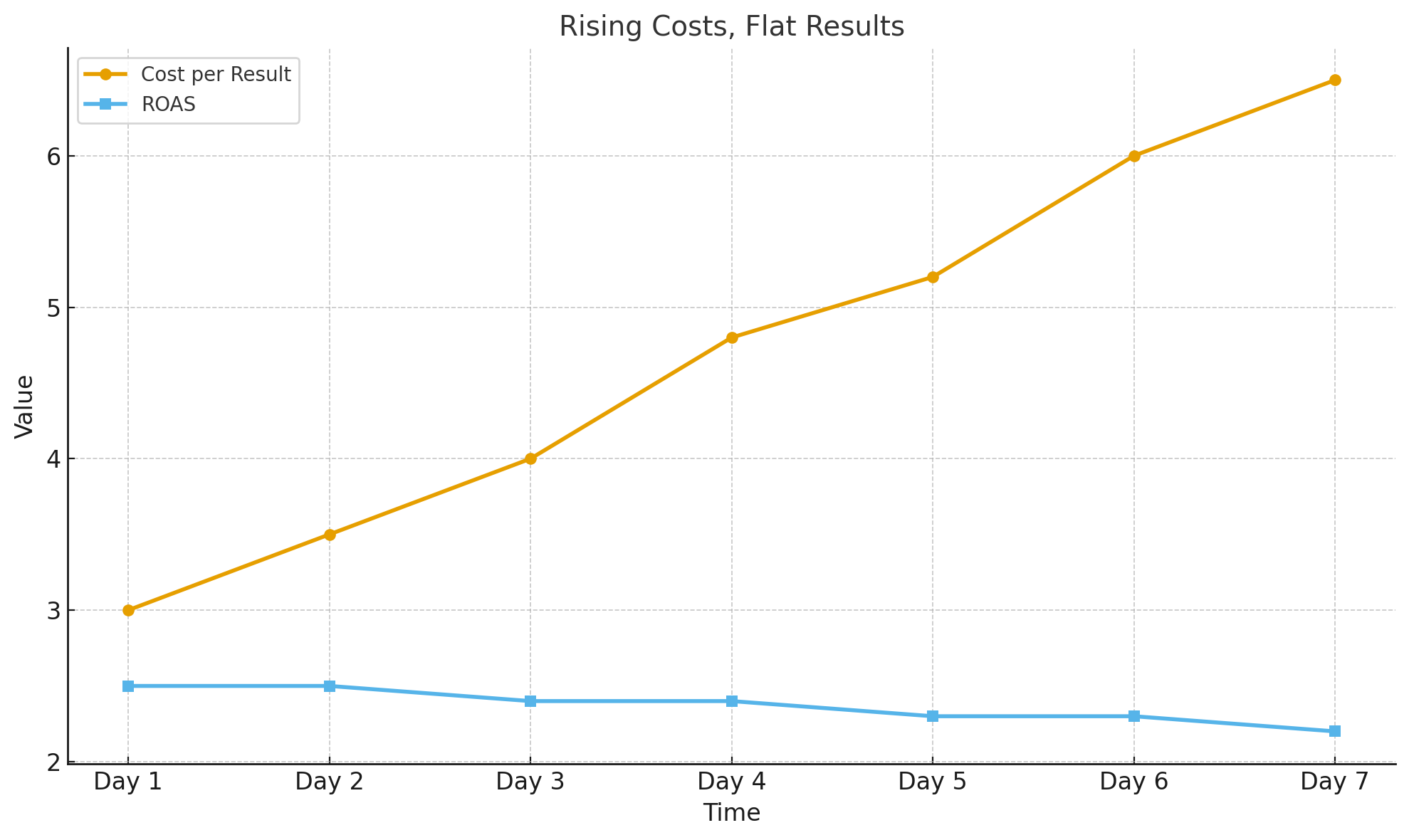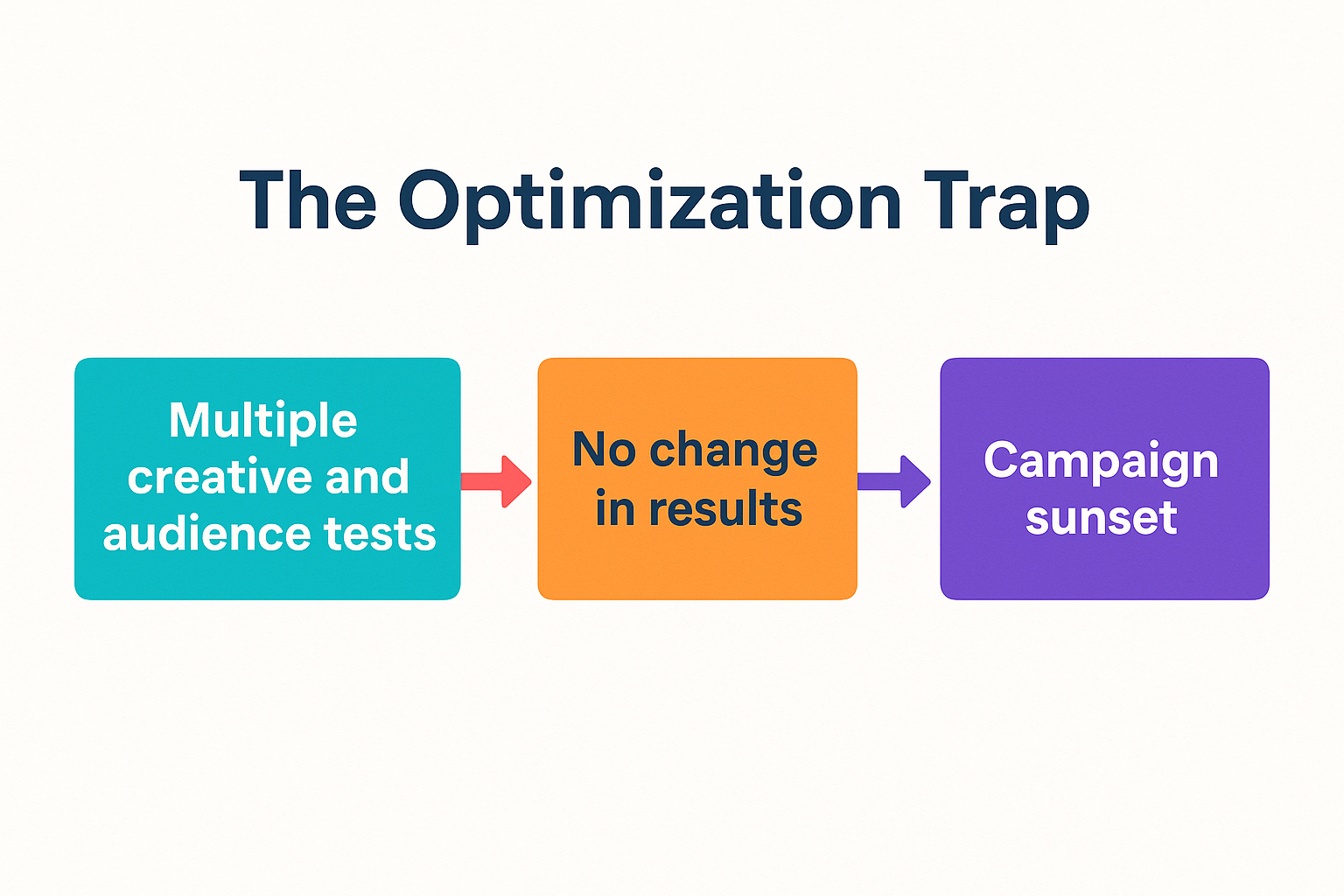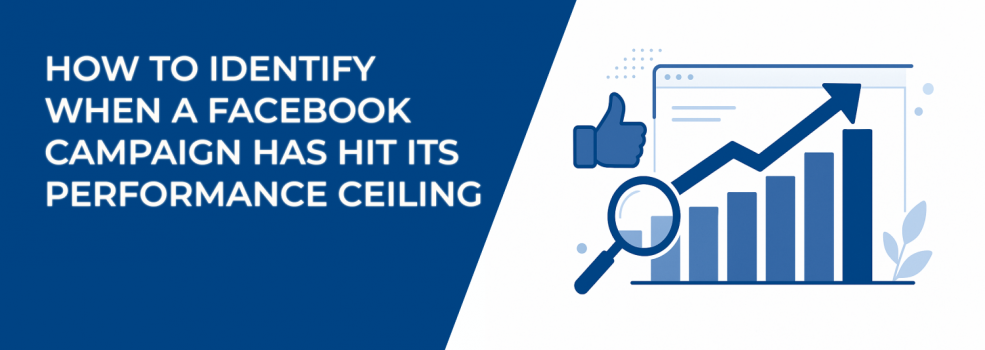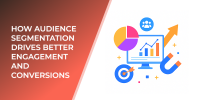Every Facebook campaign, no matter how well-built, eventually hits a limit. This invisible ceiling is where optimization no longer drives meaningful gains. So how do you know if your campaign has plateaued — and more importantly, what can you do about it?
Let’s look at the signals, strategies, and smart pivots that help advertisers spot a performance ceiling before ad spend gets wasted.
1. Rising Costs, Flat Results
You’ve seen this before. Your cost per lead (CPL), purchase (CPP), or result (CPR) goes up every day, but your key metrics — like conversion rate or ROAS — aren’t improving.

Here’s why that happens:
-
Your audience pool is exhausted.
-
Facebook’s algorithm is stretching to find more people, often outside of your core demographic.
-
Your ads are no longer converting with the same impact, likely due to creative fatigue or market saturation.
A good early warning indicator is your ad frequency. If it's hovering above 2.5 for cold audiences, it means most people have already seen the ad more than twice. For retargeting campaigns, you can stretch that a bit — but once it hits 4 or 5, it's likely overkill.
To avoid running into this wall too soon, segment your audiences based on behavior, interest, and intent. Creating micro-audiences lets you test new angles without burning out your broader base.
Need targeting inspiration? Learn how to layer detailed targeting for hyper-specific Facebook audiences.
2. Ad Fatigue: Quiet but Deadly
Ad fatigue doesn’t scream. It whispers.
Your click-through rate (CTR) starts slipping, even though you’re not making big changes. Comments dwindle. Reactions drop. The same creative that once performed well is now being ignored.
This often happens in campaigns where the same ads have been running continuously for more than 10 to 14 days. Audiences begin to gloss over them like wallpaper.
To identify if fatigue is the problem, check for these signs:
-
Decreasing CTR despite steady impressions.
-
A rising frequency score paired with lower engagement.
-
Fewer saves, shares, or meaningful comments on your ads.
Want a deeper look? Read: Ad Fatigue on Facebook: How to Spot It Early and Fix It Fast.
What you can do:
-
Run creative refreshes every 7–10 days for high-frequency campaigns.
-
Rotate between formats such as single image, short-form video, and carousels.
-
Use AI-powered design and copy tools (like these top AI text and image generators) to speed up content production without compromising quality.
3. Scaling Kills Performance
Scaling should boost revenue. But if you increase budget and results tank, that’s a red flag.
Here’s what usually goes wrong when scaling:
-
Facebook starts serving ads to less qualified users who are cheaper to reach but less likely to convert.
-
Your most responsive audiences are already saturated, so delivery widens to users who aren’t a good match.
-
The algorithm can't keep up with the budget increase, which causes instability in delivery and inconsistent performance.
Example: You go from $100/day to $300/day expecting 3x the leads. Instead, you get 30% more — but at double the CPL.
To avoid this, try horizontal scaling instead:
-
Duplicate your top-performing ad sets.
-
Vary the targeting slightly — use different lookalike percentages, interests, or geos.
-
Test different ad formats or messaging angles in each set.
For more tactics, check out The Science of Scaling Facebook Ads Without Killing Performance.
4. The Optimization Trap: Nothing Left to Tweak
You’ve tested multiple creatives, adjusted budgets, refined targeting, and tried both CBO and ABO. Results? Still stuck.
This likely means the campaign is fully optimized — and there’s just no more juice to squeeze.

Let’s break that down further. You know you’ve hit this wall when:
-
You’ve tested 4 or more versions of your creative without a performance lift.
-
You’ve iterated audiences, but results are flat across all of them.
-
You’re getting diminishing returns on budget increases, even during ideal hours.
Smart next moves:
-
Launch a completely new campaign structure — change the objective or conversion event.
-
Refresh the offer itself, not just the way it's advertised.
-
Rebuild your funnel to focus on a different stage (top-of-funnel, middle-of-funnel, etc.).
Sometimes the fix isn’t better optimization — it’s a better direction.
5. Learning Phase Issues
"Learning Limited" can haunt your ad sets. When Meta’s algorithm doesn’t get enough conversion data, it can’t properly optimize.
This often happens when ad sets are too narrow, budgets are too small, or there are too many competing ad sets inside the campaign.
Watch for these signs:
-
Your ad set is stuck in learning for 5+ days.
-
You’re seeing inconsistent delivery across otherwise similar ad sets.
-
You get the “Ad Set May Get Zero” warning — which is real, and serious.
Need help with that? Read: Why You See 'Ad Set May Get Zero' on Facebook and How to Fix It.
Tips:
-
Consolidate similar ad sets to avoid splitting your conversion data too thin.
-
Increase budgets in small, incremental steps (10% to 20%) to trigger faster learning.
-
Avoid making edits during the learning phase — especially changes to targeting or optimization goals.
If none of this works, it may be time to restart — with better audience and objective alignment. Learn how in Meta Ad Campaign Objectives Explained.
Final Word: Stop Optimizing Dead Campaigns
It’s tempting to keep tweaking. But when you’ve tried everything and metrics keep slipping, more optimization won't help.
Instead:
-
Recognize the plateau, and avoid pouring more budget into a flatlined campaign.
-
Launch fresh creative with a sharper hook, clearer offer, or better aligned message.
-
Reevaluate your entire Facebook ad targeting approach to unlock new performance potential.
Remember, your next breakthrough likely won’t come from a minor fix. It will come from a smarter structure, a clearer goal, or a better-aligned audience.

